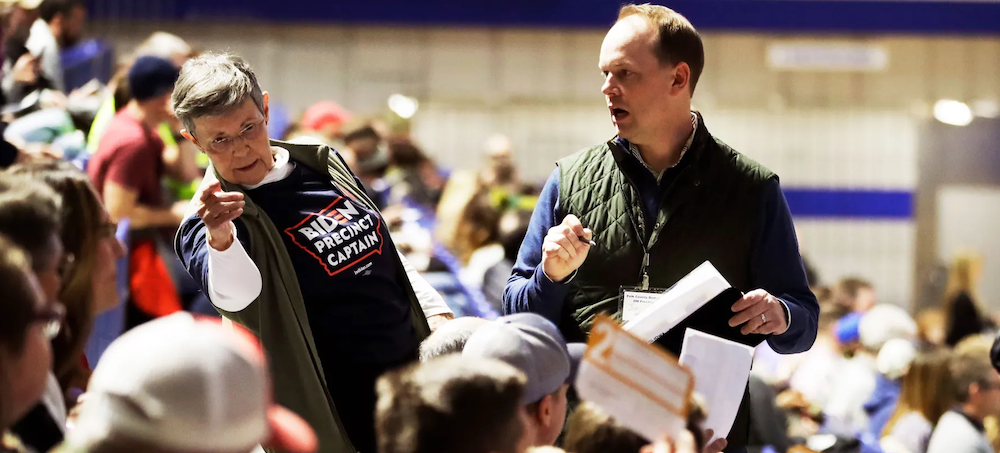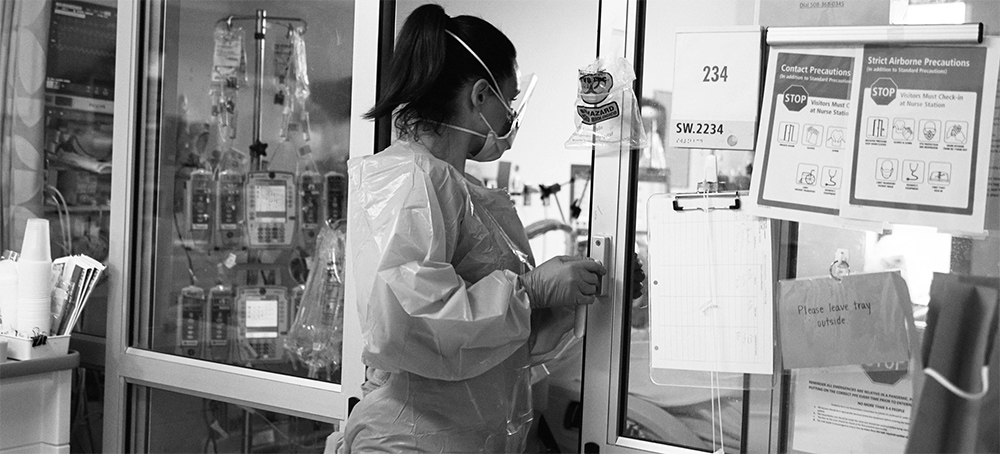Live on the homepage now!
Reader Supported News
Combine the 2020 debacle with Iowa's new penchant for electing meatheads, and it should be no contest at all.
The second was the 2020 Iowa presidential caucuses, for which I believe people are still counting votes. From the New York Times:
“I don’t even know if they know what they don’t know,” Mr. Bagniewski said of the state party shortly before 2 a.m. on Tuesday…And so, for nearly 22 hours after the Iowa caucuses had begun — with much fanfare, live cable coverage and deep consequences for the Democratic Party and the country — the state party remained silent.
The bright side of the Ruiz debacle was that the Marathon was professionalized almost overnight. And I suspect that the bright side of the Iowa fiasco is that the importance of the Iowa caucuses will be dropped to somewhere around the level of a cow-pie-tossing competition at a county fair. Because, and I do not mean to seem harsh, but the good people of Iowa have lost all claim on a pride of place in a presidential nominating process, because the good people of Iowa have taken to electing meatheads. Governor Kim Reynolds has flown largely under the wingnut radar, but her performance in office has shown her to be playing station-to-station baseball along the modern Republican base paths. Her pet legislature has come right along with her.
Book-banning? Check.
Voter suppression based on the Big Lie? Check.
But this week, Reynolds and the state government outdid themselves. They adapted the late George Aiken’s advice on Vietnam to the current pandemic. They have declared victory and withdrawn. From the Des Moines Register:
The shift will include pulling the plug on a state website focusing on COVID data, such as the number of Iowans testing positive for the disease, being hospitalized with it or dying from it. However, many of those statistics will continue to be available on other state and federal websites, Kelly Garcia, interim director of the Iowa Department of Public Health, said Thursday.
Reynolds said in her statement Thursday that she will allow the current proclamation to expire on Feb. 15 at 11:59 p.m. She said it's time to reallocate state resources. "We cannot continue to suspend duly enacted laws and treat COVID-19 as a public health emergency indefinitely," Reynolds said in a statement. "After two years, it’s no longer feasible or necessary. The flu and other infectious illnesses are part of our everyday lives, and coronavirus can be managed similarly."
Closing the state’s COVID data website is, of course, the giveaway. By suspending the state of emergency, Reynolds is responding to the know-nothing horse-paste segment of the Republican base. If the pandemic hits Iowa hard as a result, Reynolds would rather not have her government publishing statistics that make her look as though she really doesn’t have a handle on things. The facts will do that quite well on their own.
(I mean, it’s not like her administration misappropriated federal COVID relief funds to pay staff salaries. No, wait, it is exactly like that.)
I suspect we’ll be seeing a lot of this from states with Republican governors and/or legislative majorities. Hey, we’ve done all we can. Suck it up and let’s all get back to work at the grain silo. And the pandemic will burn on and on and on, but it’s OK, because we won’t be tallying the butcher’s bill anymore.
Hey, look. More jobs again. From CNBC:
Nonfarm payrolls surged by 467,000 for the month, while the unemployment rate edged higher to 4%, according to the Bureau of Labor Statistics. The Dow Jones estimate was for payroll growth of 150,000 and a 3.9% unemployment rate. The stunning gain came a week after the White House warned that the numbers could be low due to the pandemic.
This is one of those days on which I could envision replacing every economist on the planet—or at least every economist on cable television—with a ouija board. All week, we heard that Omicron was going to murder the job figures to death. Every estimate was ridiculously low. This is the kind of prognosticating that forces you to jump turnstiles to get back from the track. And then there’s this, which is always my favorite part of any monthly jobs report.
Along with the big upside surprise for January, massive revisions sent previous months considerably higher. December, which initially was reported as a gain of 199,000, went up to 510,000. November surged to 647,000 from the previous reported 249,000. For the two months alone, the initial counts were revised up by 709,000. The revisions came as part of the annual adjustments from the BLS that saw sizeable changes for many of the months in 2021.
That December jobs report was the occasion for much weeping and gnashing of teeth and rending of spreadsheets. Now, it turns out that all the tsuris was at the very least premature. Look, this president is doing a good job repairing a COVID-riddled national economy. There are parts of the job that still need to be done, but I think we can probably put the ouija board back in the attic—and see if there’s room for the hysterics, too.
Weekly WWOZ Pick To Click: “Bad Dream Blues” (Mabel Smith): Yeah, I pretty much still love New Orleans.
Weekly Visit To The Pathe Archives: Here, from 1951, are the citizens of Brighton in England organizing to vaccinate themselves against a terrifying smallpox outbreak. That little girl in the hat at the end is braver than all the camo-wearing, freedom-belching, Fox-watching yahoos making a nuisance of themselves everywhere from New York to Ottawa. History is so cool.
Brian Flores’s epic lawsuit against the NFL and three of its teams has all the potential of Curt Flood’s lawsuit against Major League Baseball, and the prosecution of NHL super crook Alan Eagleson, in terms of shaking up the way a sports-entertainment behemoth does business. Apparently, the NFL will start off by invoking a clause in the standard contract that forces disputes like this one into arbitration. But Flores could take his case into the federal administrative system, which would obviate any required arbitration. And I don’t think any judge is likely to hit the abort switch on this lawsuit shortly after launch. This is a bonanza for the lawyers on both sides, but it’s Flores who’s showing the strength of character that football is supposed to breed in its players. He may be setting fire to his career in doing so. As for the other side, what do they care if they wind up arraigned in history for systemic racism? They’ll probably toast themselves for their cleverness.
Here’s a tasty lagniappe to begin the weekend. From CNN:
Two sources who have reviewed the call records tell CNN that Trump spoke on the phone at the White House residence with [Congressman Jim] Jordan for 10 minutes on the morning of January 6. That afternoon, Jordan took to the House floor to object to the certification of President Joe Biden's Electoral College win, and pro-Trump supporters attacked the US Capitol...When asked on Friday about the White House records, Jordan told CNN that he had multiple calls with Trump on January 6 but could only confirm that he spoke with Trump after he left the House floor and did not remember whether they spoke that morning. "I talked to the President a number of times that day, but I don't remember the times," Jordan said.
I never spoke to a president* on the day of an insurrection he incited, so I don’t know how easy it is to forget the details on something like that. Must be one of those things like paying off burglars, or selling missiles to the Mullahs, that just tend to slip everyone’s minds.
Is it a good day for dinosaur news, BBC? It’s always a good day for dinosaur news!
The trace fossil from the Jurassic era was found by archaeologist Marie Woods on the foreshore near Scarborough. Ms Woods said recent strong storms had caused "dramatic erosion" and it was found in the same area she discovered a larger footprint last year. The claw marks were laid down in muddy, wet conditions up to 175 million years ago in what is now North Yorkshire. Ms Woods said of her discovery of a fossilised therapod - or three-toed dinoasaur: "I feel quite excited when I find something, I'm like a child when I do...I go out along coasts often and onto the beach and then it's a case of trying to get your eye in.”
We don’t get enough dinosaur stories like Marie Woods’ anymore. The lone searcher, wandering amid the storm-scrubbed shore, stumbling on dinosaur footprints the way so many of us collect shells. A lot of paleontology was done this way before the field became so systematized.
Ms Woods' first discovery was actually "a rediscovery", as it had been partially spotted by fossil collector Rob Taylor back in November 2020. Last year's bigger find was "quite significant" and papers on that trace fossil were due to be published soon, she said. Ms Woods, a director of Heritage Adventures, said many other people had also found good fossils on that part of the North Yorkshire coast. She said the area around Scarborough "could be called the Dinosaur Coast”. About £2,000 was needed to properly preserve the trace fossil by getting an expert to carry out conservation similar to a "scientific 3D-jigsaw", Ms Woods added.
They lived then so that, one day, 170 million years later, Marie Woods would be walking the beach and be happy.
The landlord is spending his second week with his left leg stuck in what appears to be a golf bag. Hence, the Last Call newsletter will be dark this week, but will be back next Saturday alight with its usual proportions of wit, wisdom, and completely useless historical knowledge. The dusty chests in the attic of the mind are ever full. See you then.
I’ll be back on Monday with the further misadventures of the world’s oldest republic, now d/b/a The Great American Chuckle Hut. Be well and play nice, ya bastids. Stay above the snake-line, wear the damn mask, and get the damn shots, especially the damn boosters.
Follow us on facebook and twitter!
PO Box 2043 / Citrus Heights, CA 95611












